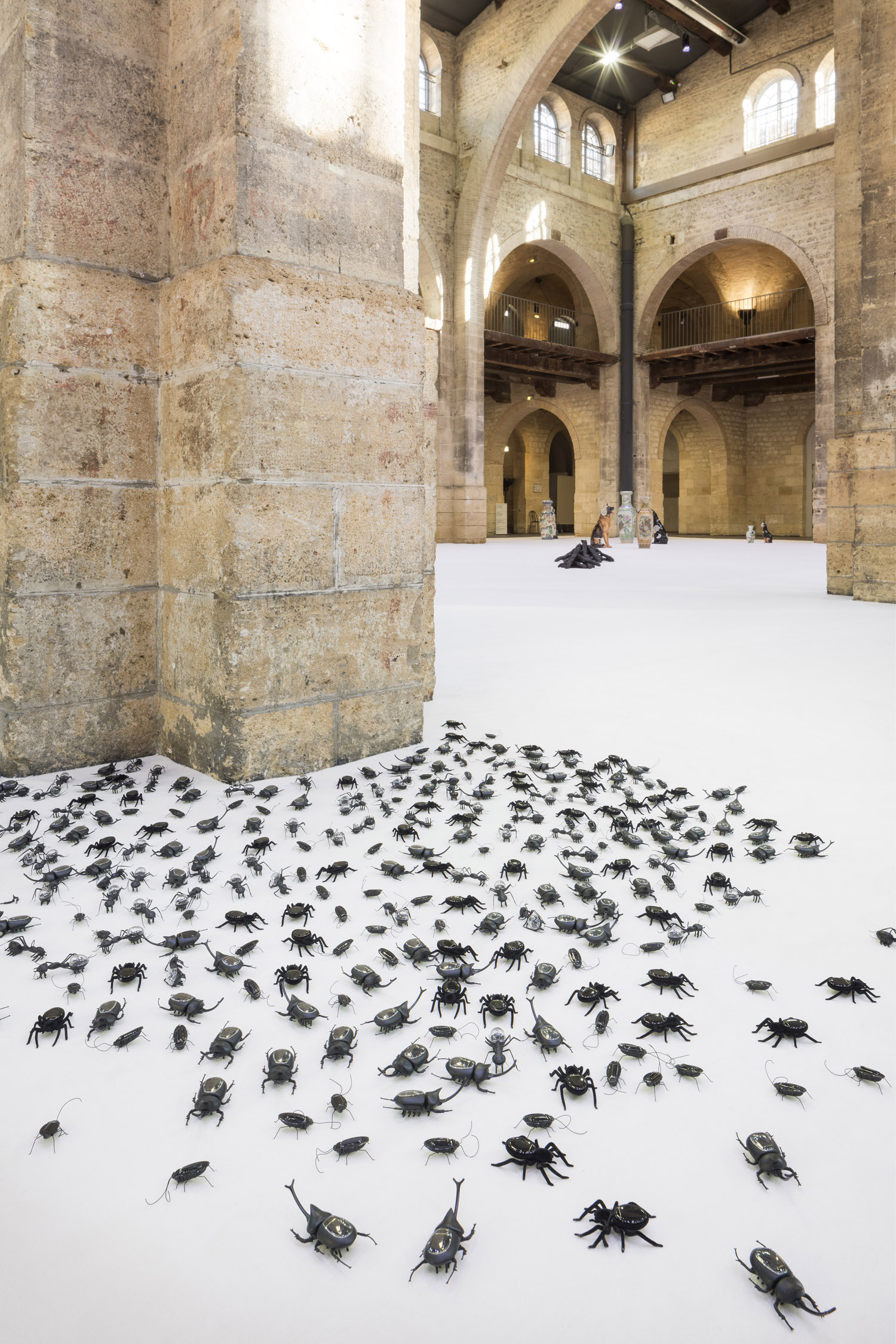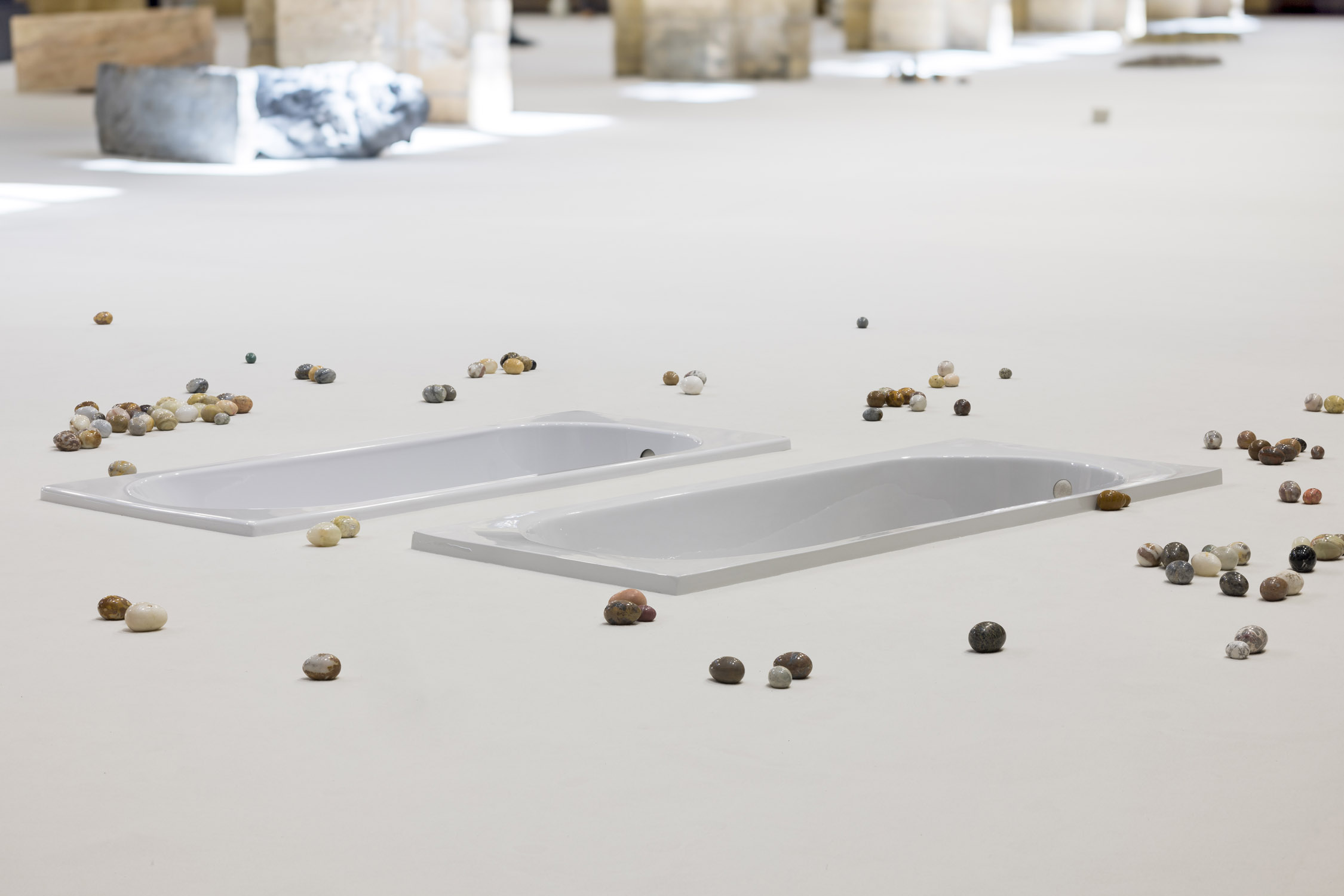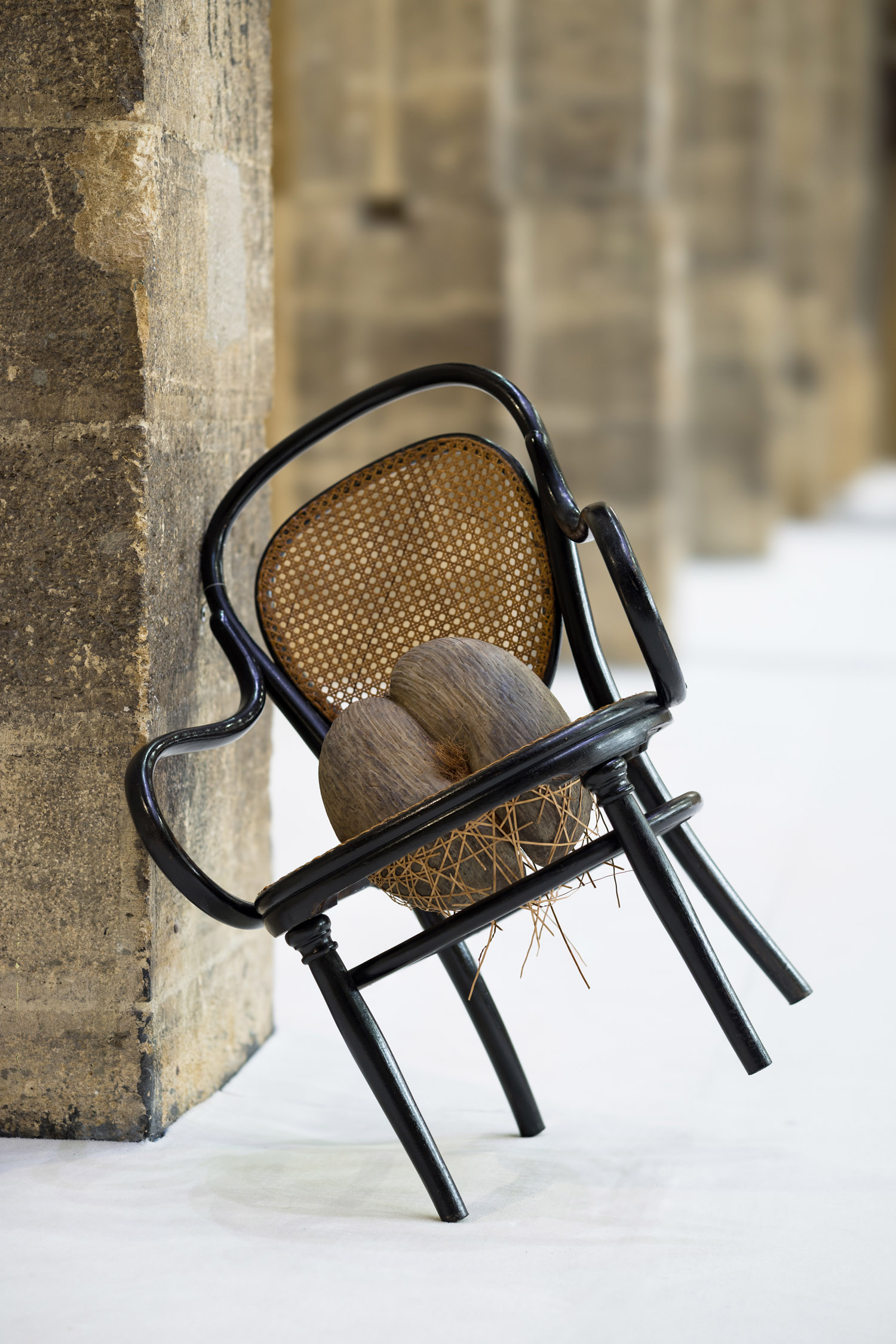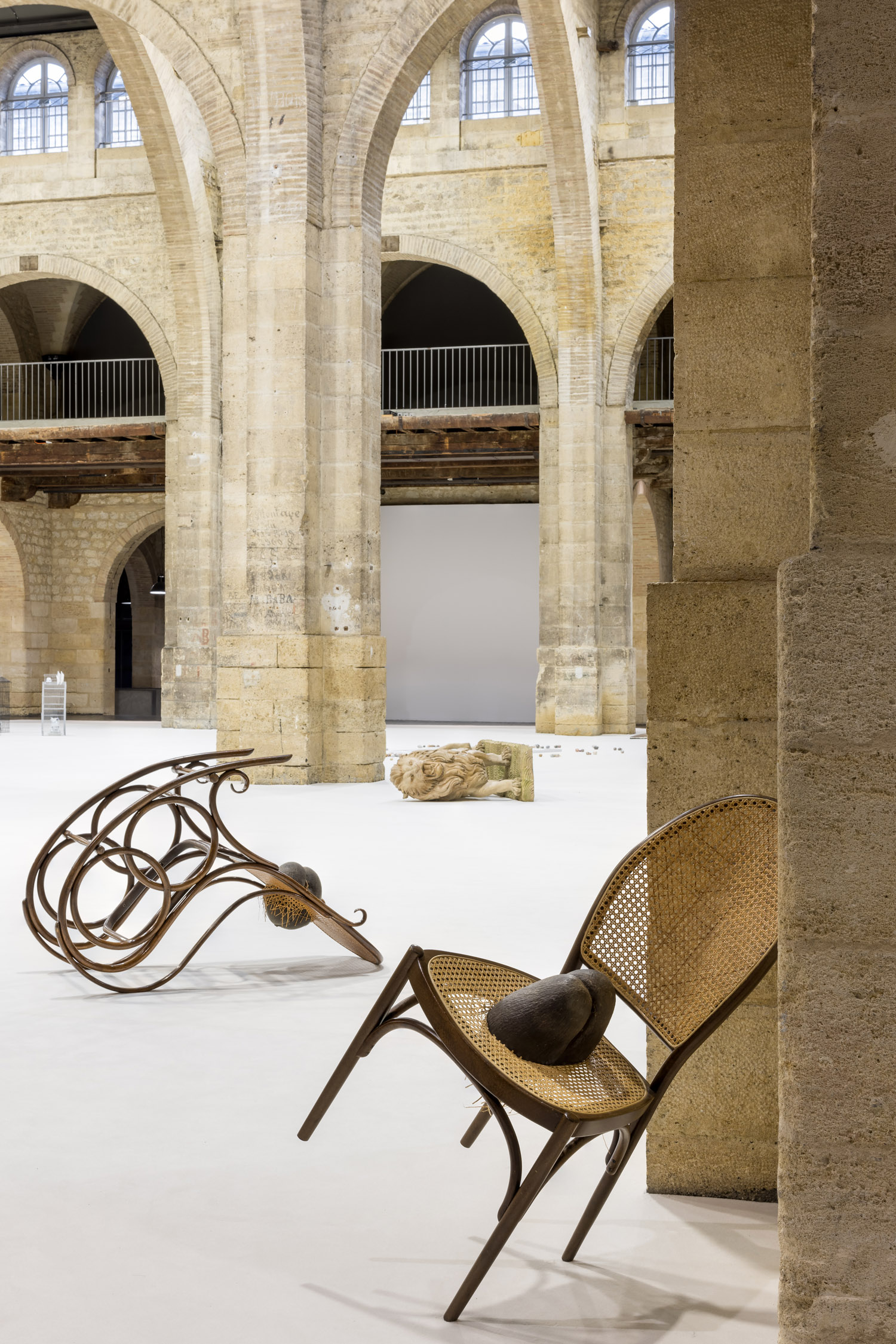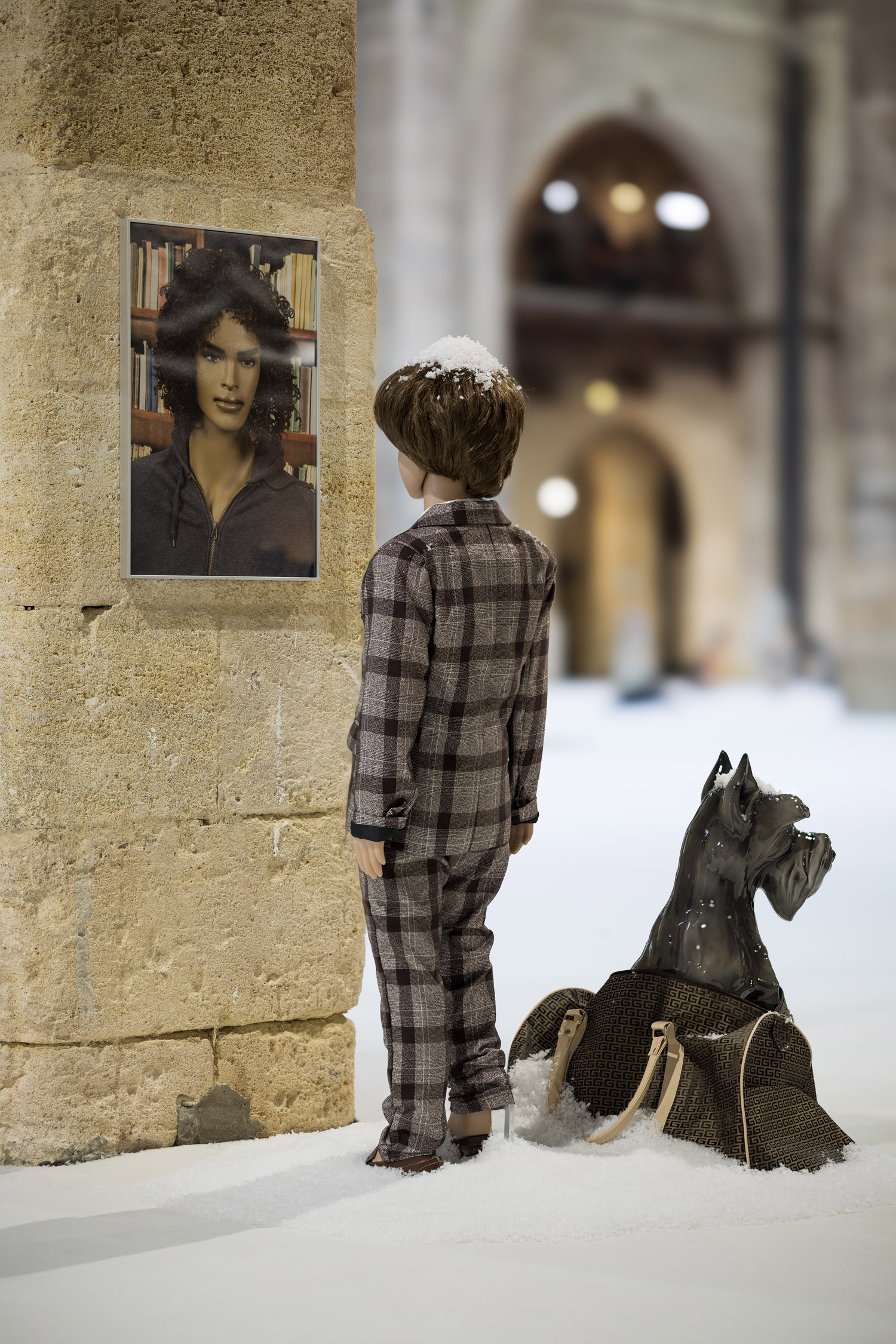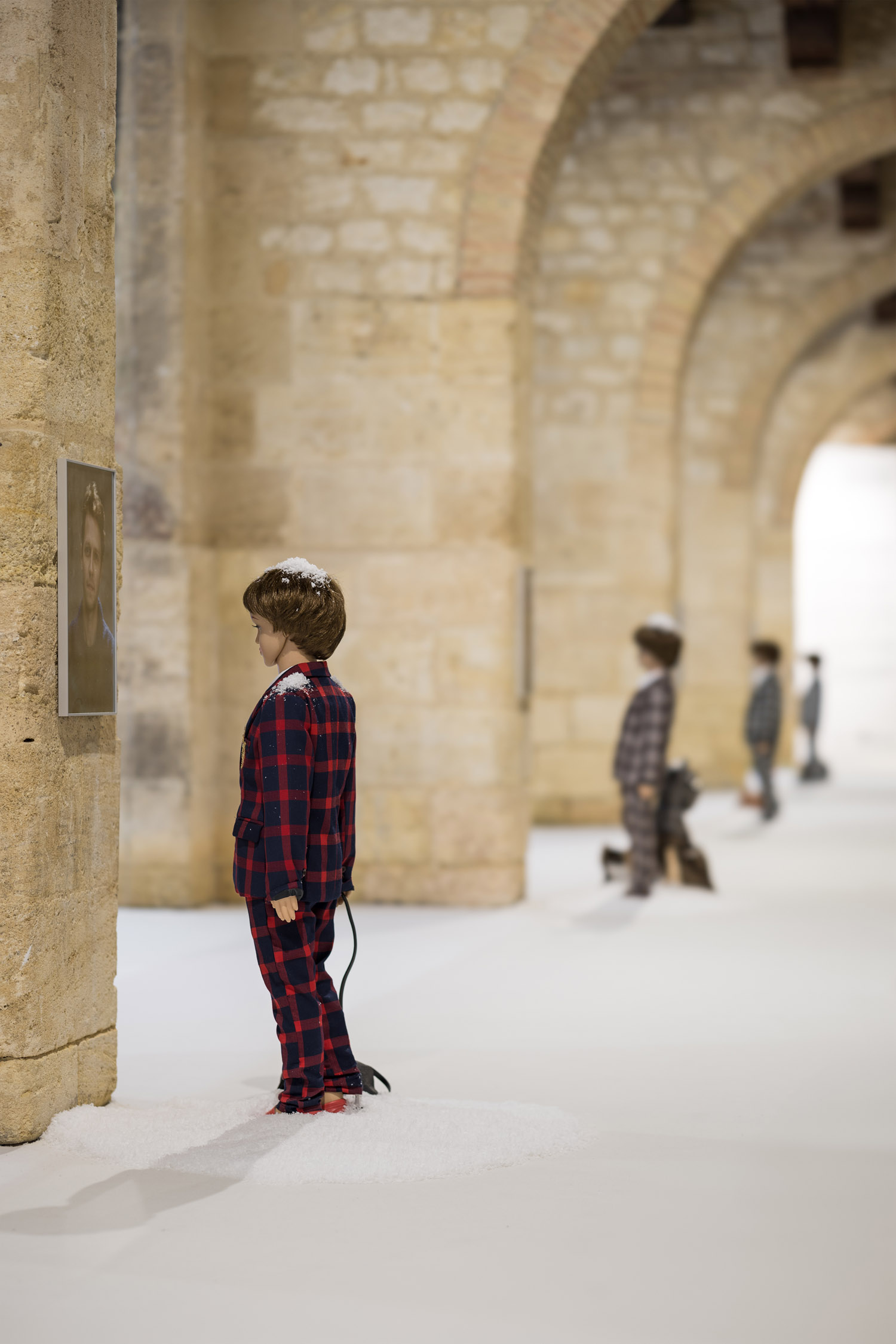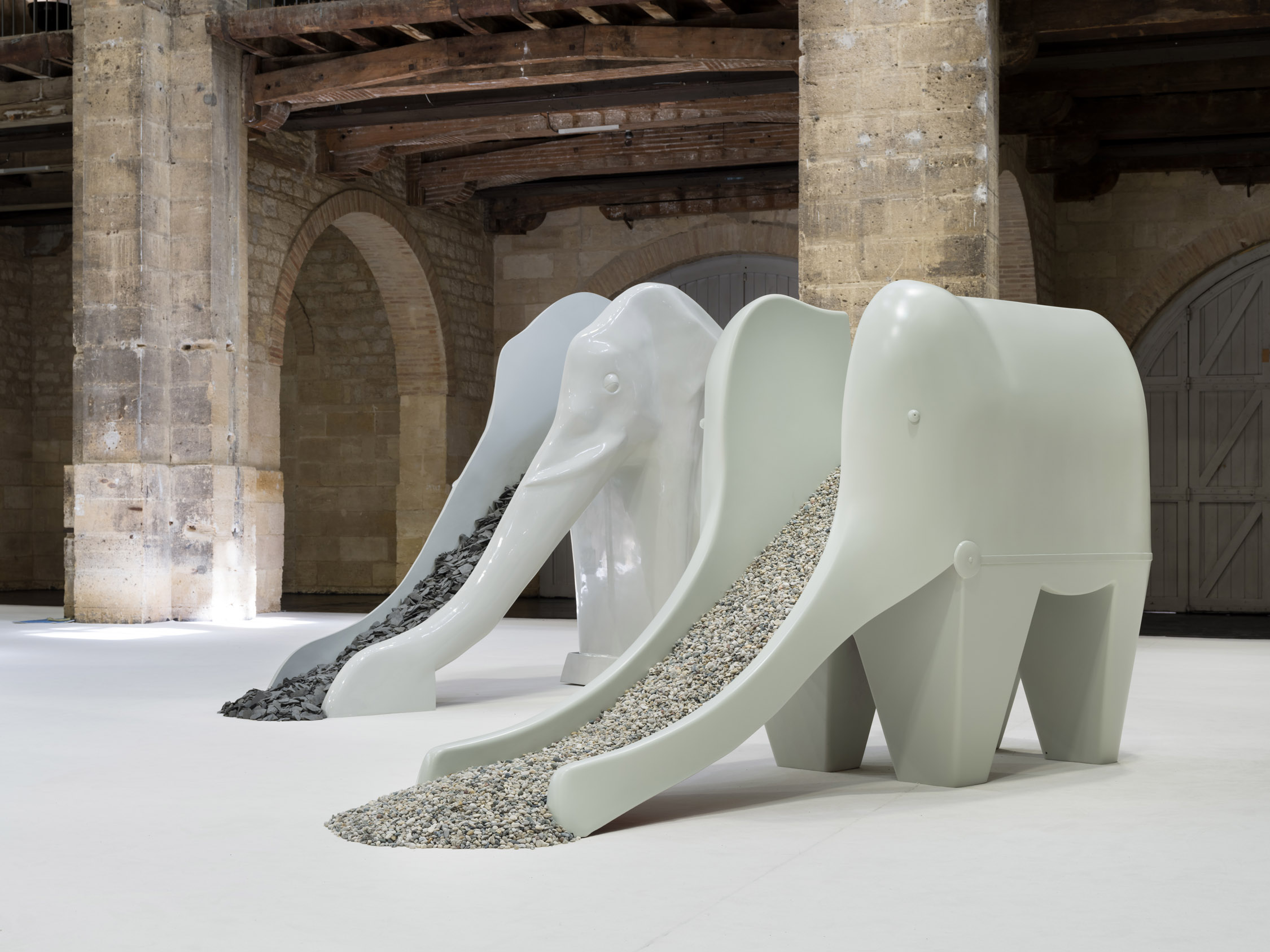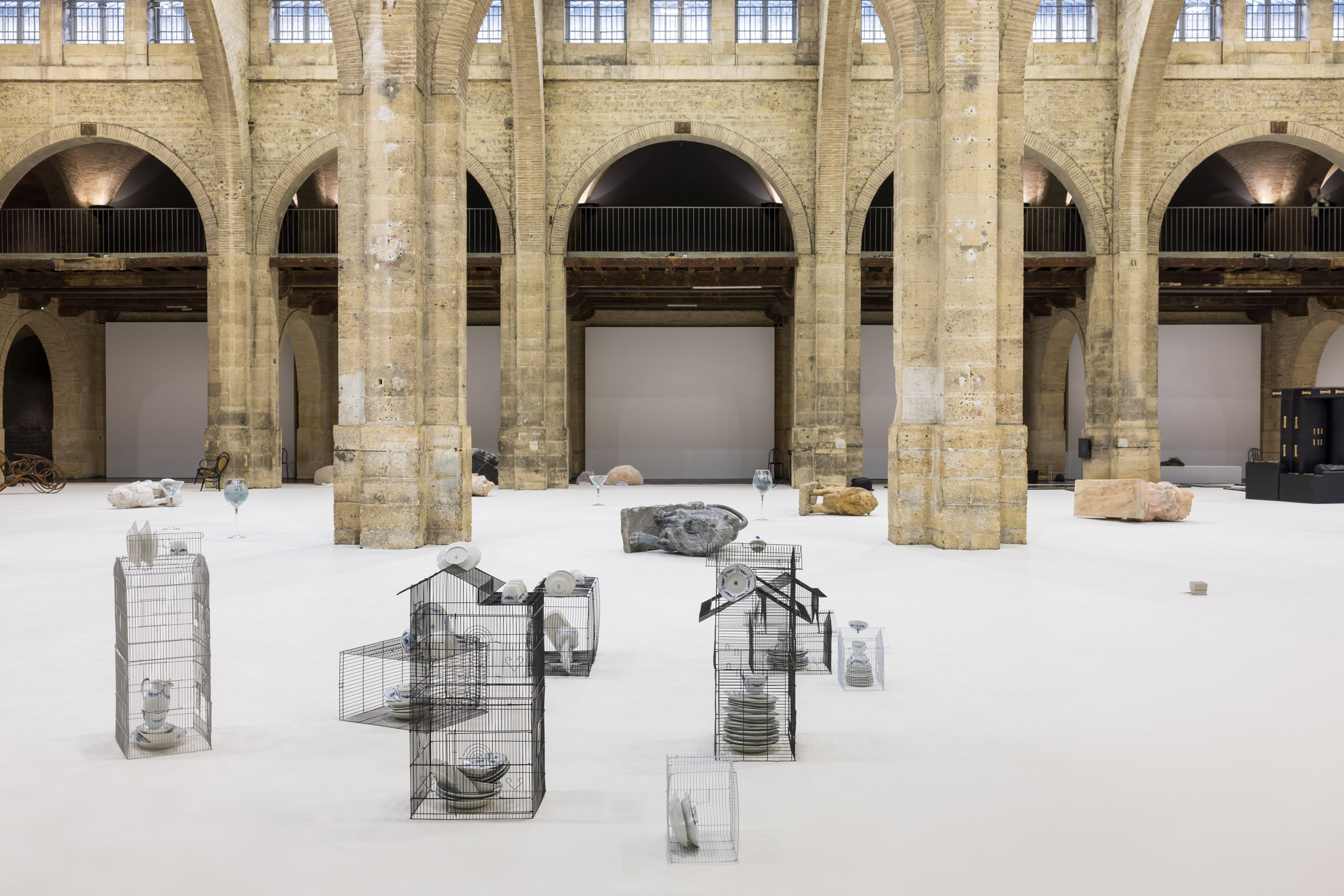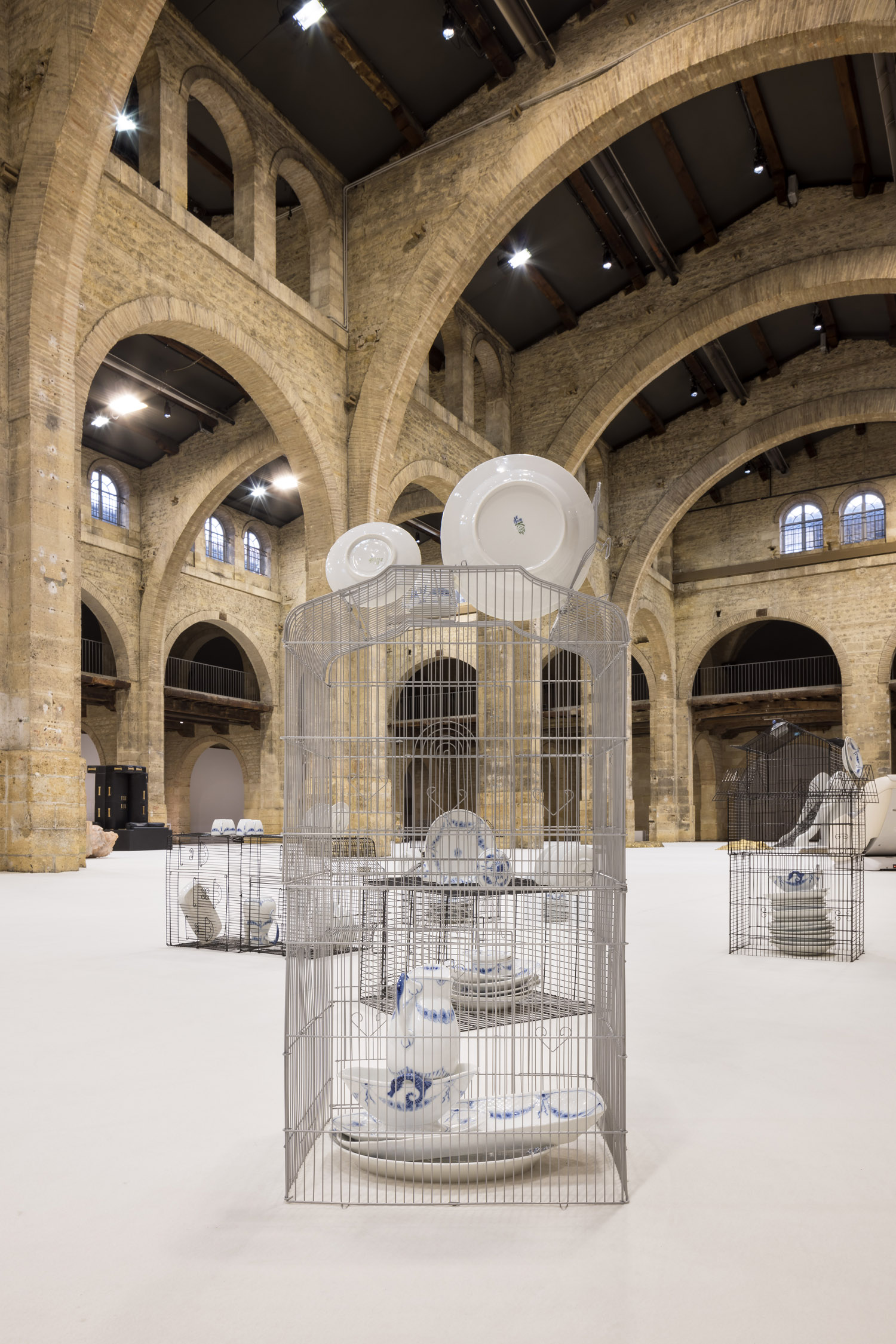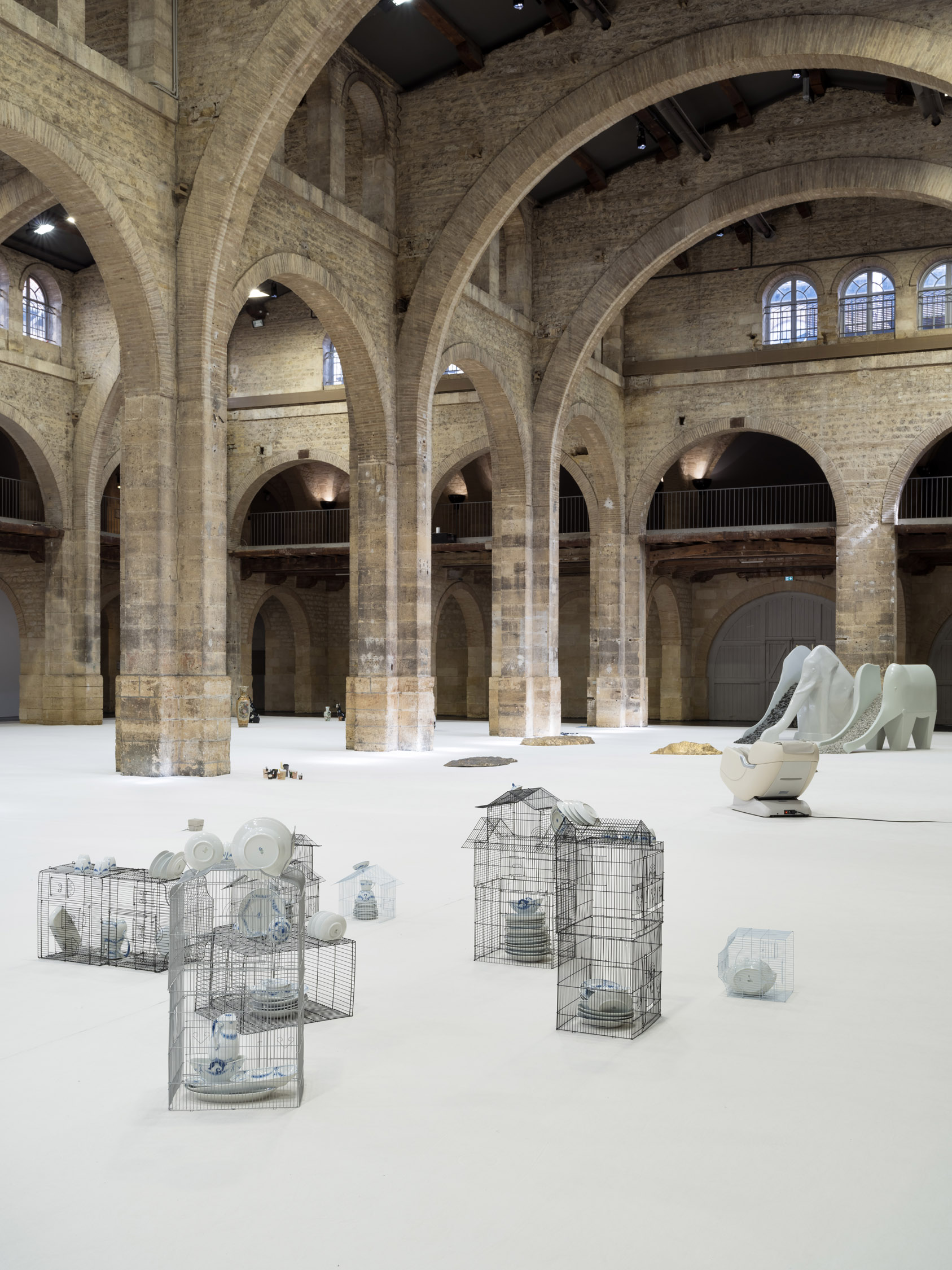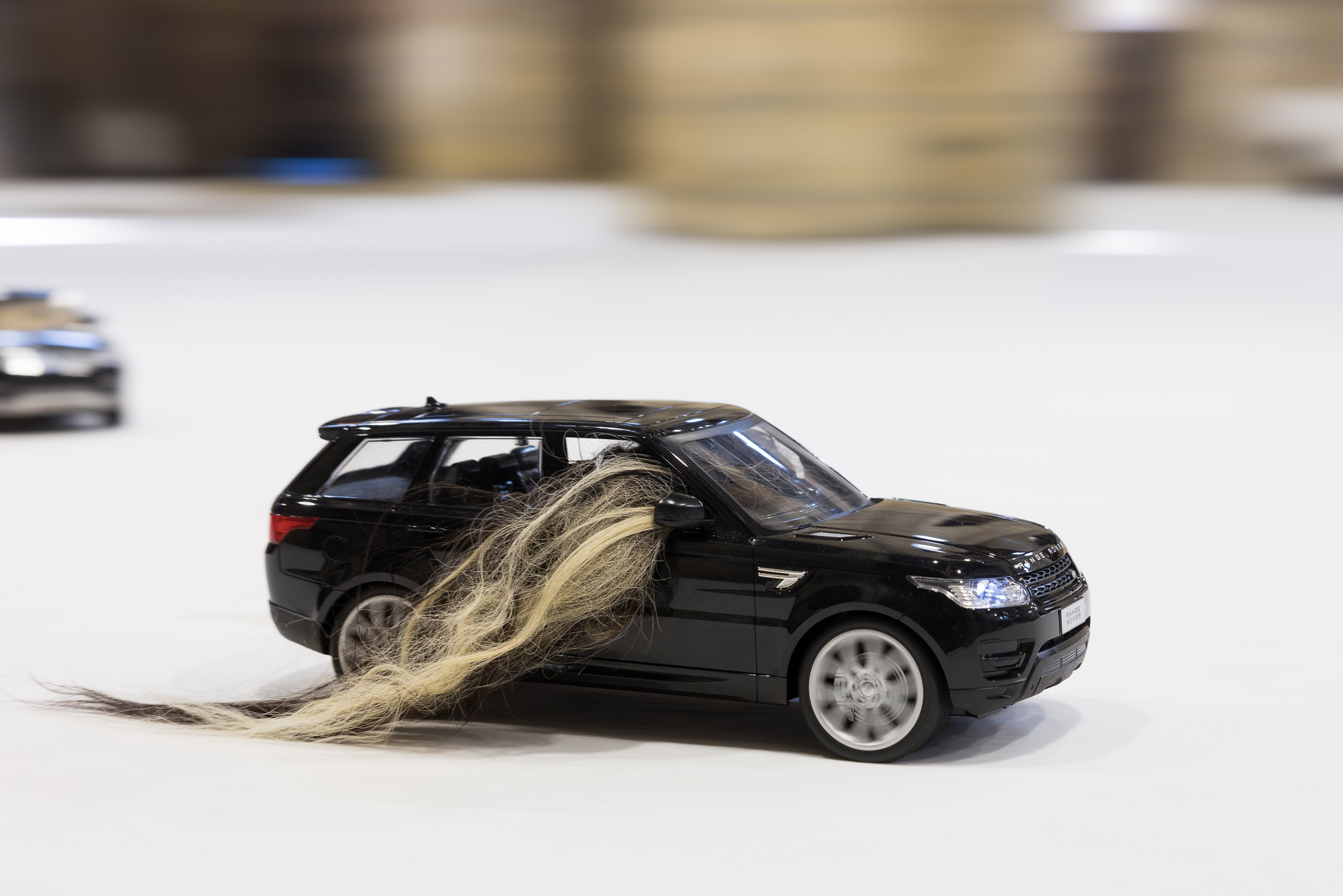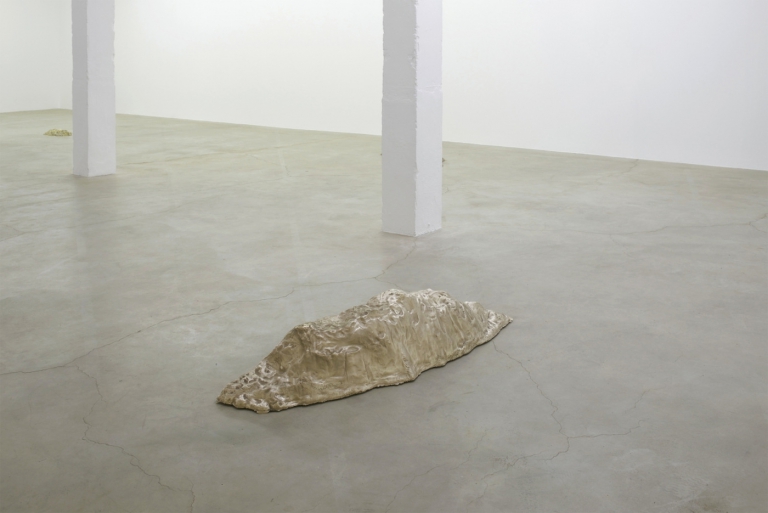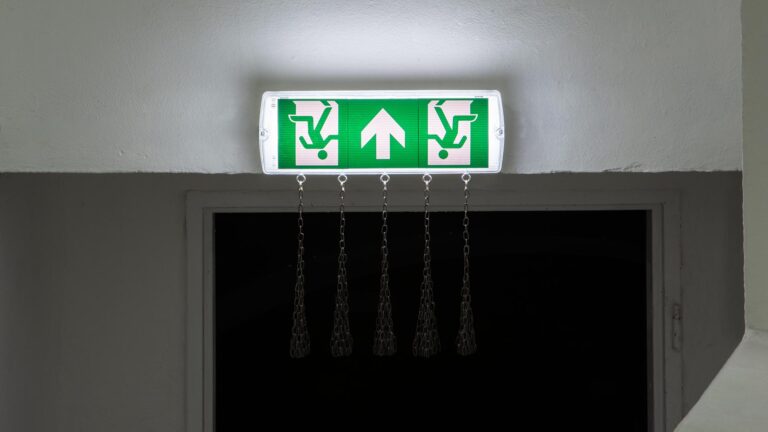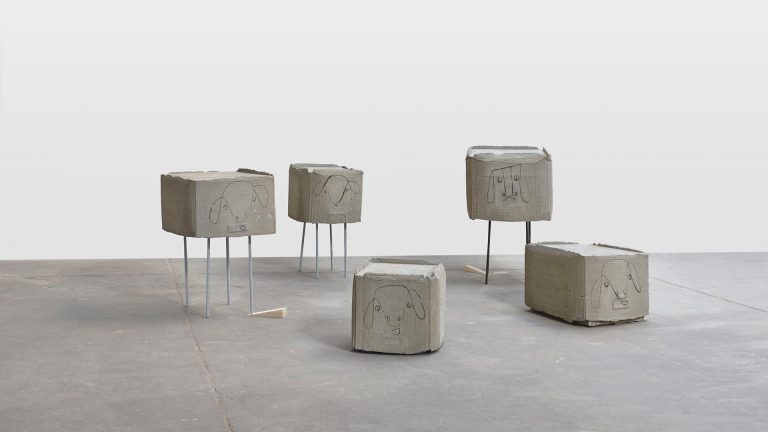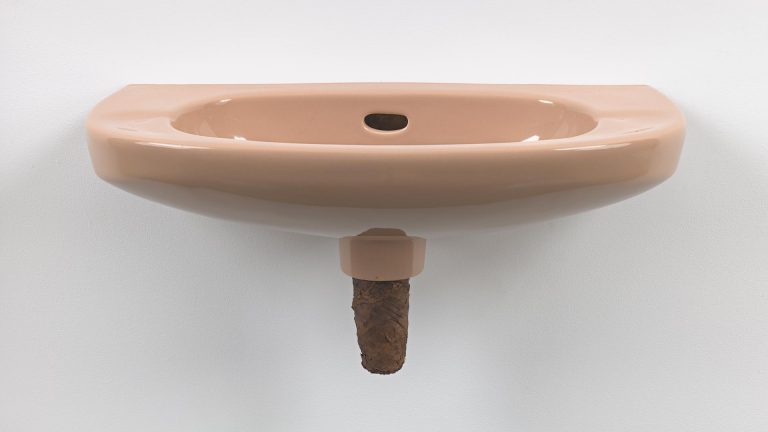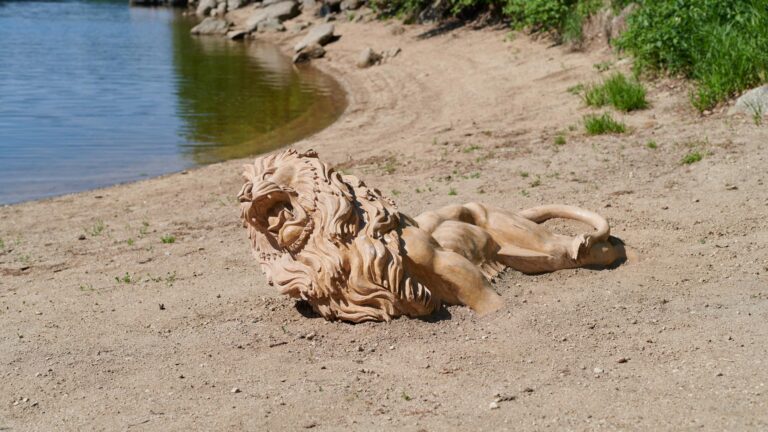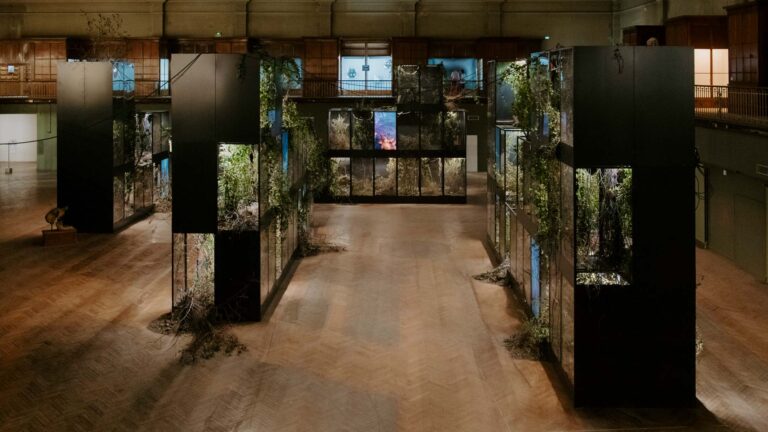Artist: Nina Beier
Exhibition title: Auto
Curated by: Sandra Patron and Cédric Fauq
Venue: Capc Musée d’art contemporain de Bordeaux, Bordeaux, France
Date: March 8 – September 8, 2024
Photography: all images copyright and courtesy of the artist and Capc Musée d’art contemporain de Bordeaux
Note: Exhibition booklet is available here
The Capc Musée d’art contemporain de Bordeaux is delighted to present in the great nave a retrospective exhibition of the work of Danish artist Nina Beier (b. 1975), spanning almost twenty years. The artist’s project, entitled “Auto”, is being presented jointly at Capc and Kiasma in Helsinki (Finland). This will be the artist’s first solo exhibition in a French institution.
Marble lions, remote-controlled luxury cars, elephant slides and Royal Chinese porcelain copies are some of the elements that make up the artist’s formal universe. Using objects gleaned from antique stores, private collectors, second hand trading websites and other online platforms, Nina Beier explores the underlying narratives contained in a broad range of generic objects populating our daily lives, some of which we produce, consume and then throw away. Nina Beier’s artistic process consists primarily in researching and selecting these familiar objects for the stories they contain, but also because their very existence is a form of paradox, a contradiction that says something about the values on the basis of which our Western societies construct and represent themselves. These objects are then hijacked, hybridised, juxtaposed with others, to become sculptures that are both familiar and disconcerting, often absurd and strangely disturbing. The marble lions are turned upside down and carry contain milk in their hollows; the remote-controlled cars are filled with natural wigs; the elephant slides spit slates; and the porcelain is caged.
For the artist, these objects are paradoxical witnesses to our times, both in terms of the intentions behind them, the signs they conjure up (consciously or unconsciously), and the way in which they are produced, used and traded around the world. Last but not least, the artist explores what the changes in their status over time and geography say about the world we live in. For her series Empire (2019), Nina Beier purchased a collection of porcelain tableware produced by the Danish porcelain manufacturer Royal Copenhagen. The collection clearly echoes Chinese Ming porcelain, which has been coveted for its quality since the 14th century. So much so that the Europeans soon sought to produce their own. But it would take over 400 years before European craftsmen were able to reproduce the Chinese porcelain, pointing to the early tradition of knockoffs production and reversing the perspective on where “the authentic” and “copies” come from.
What image does the Ming dynasty convey to our Western eyes, so that this crockery is reproduced in Europe? This link between an object, its image and its circulation is an important key to understand Nina Beier’s work: consuming the image of a thing, consuming its aura, its cultural determinant, is just as important as consuming the thing itself. In Nina Beier’s work, the deconstruction of existing value systems is central, whether in terms of gender, class or the domination associated with commercial, financial, and colonial empires. The artist overturns established hierarchies (between the precious and the banal, the authentic and the counterfeit, the handmade and the mass-produced, the raw product and its transformation) and offers a critique of our contemporary world.
Using materials for their evocative powers – flirting with cliché, which she employs deliberately – we come across palm leaves and beach towels, as well as waterbeds and Persian rugs. Her sculptures fall, break and spill out, participating in a tragedy of statuary and monument (which would have crossed paths with Buster Keaton along the way).
While the artist’s work undeniably relies on the absurd, it also revolves around a darker side, that of fall, loss and death. More than death, in fact, the artist seems to be examining an in-between state, a liminal threshold, as in the case of this dog, which we don’t know whether it is sleeping for a moment or for eternity, or these wigs made of natural hair, neither completely alive nor completely dead. Nina Beier’s work seems haunted by the idea of decay.
The invitation to Nina Beier also echoes the particular context of the Capc, a museum that occupies the spaces of a former warehouse for colonial goods built in 1824 to meet the growing need for imports from the French colonies to continental Europe. Linked to the circulation of objects and the value placed on them, the selection of works for “Auto” will address themes ranging from domesticity (European Interiors, 2018; Baby, 2018; Minutes, 2013) to gender issues (Auto, 2017; Female Nude, 2015 and Man, 2017) to imperialism (China, 2015; Empire, 2019; Guardians, 2021) and financial capitalism (Manual Therapy, 2016; Liquid Assets, 2013; Greens, 2013 and Business, 2018).
While the exhibition focuses primarily on the artist’s sculptural practice, choosing not to use the museum walls, the selection of works also highlights Nina Beier’s relationship with organic materials (burnt bread, milk, fresh vegetables, natural fibres and human wigs). “Auto” will also provide a glimpse, on different occasions (opening, Night of the Museums and closing), of Nina Beier’s longlasting relationship with performance. At the opening, one can attend a slow choreography of grey-haired people repeating the same gesture of inhaling and exhaling smoke rings (Prince, 2021). For the finale, a retired professional dancer will be invited to dance in chronological order and from memory the works spanning her career (The Complete Works, 2009). Meanwhile, during the Night of the Museums, two people will be endlessly rehearsing the yoga postures of the cow and the cat (Exercise, 2015).
To bring her works together and create a dialogue between them, Nina Beier has covered most of the floor of the nave with a white carpet, at once a scenic space, a landscape of immaculate snow, an ice rink and a blank page. This gesture, which acts as a negative of the space’s usual black floor, interests the artist in what it makes possible and impossible. As well as providing a horizontal, featureless base for the sculptures, this carpet changes the nature of the exhibition space, giving it a domestic feel.
“Auto”, the title of the exhibition borrowed from one of the artist’s works, evokes the idea of motorised vehicles, automata and an entire robotic imagination, but could also refer to the self-taught (autodidactict) and autobiographical. These are two terms that could lead us to think about the nature of Nina Beier’s gestures as a sculptor, and which also make it possible to think of the retrospective as a form of self-writing. Speeking about the world, the artist says she manipulates the objects to make their biographies palpable. Behind the formal games, Nina Beier’s practice is first and foremost an art of storytelling, one that enables things to speak for themselves directly to us.
Sandra Patron and Cédric Fauq, Curators of the exhibition
